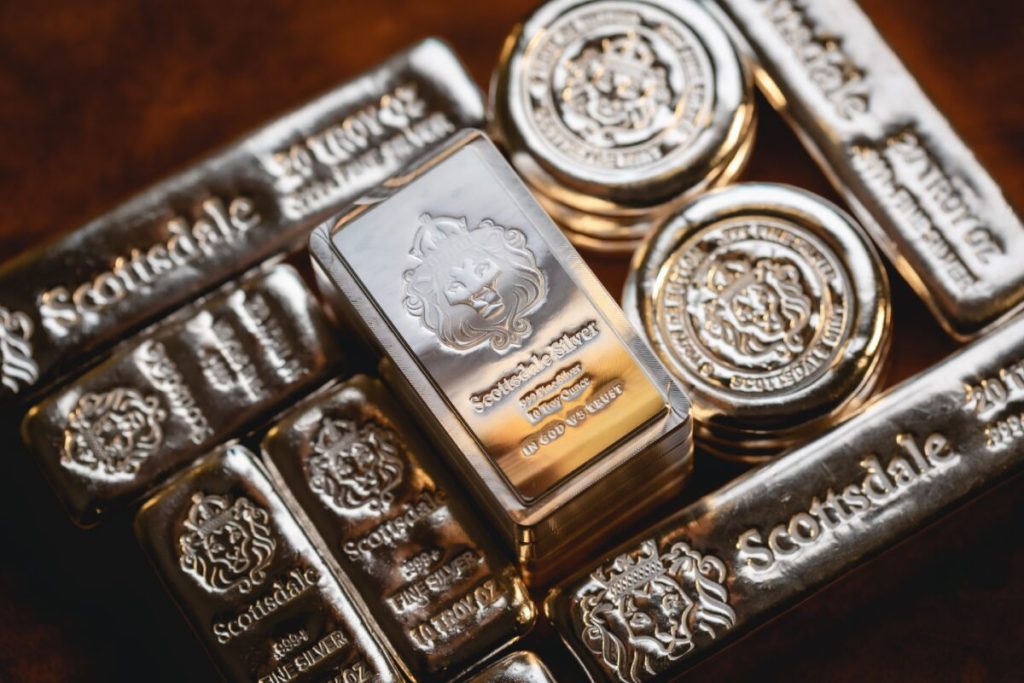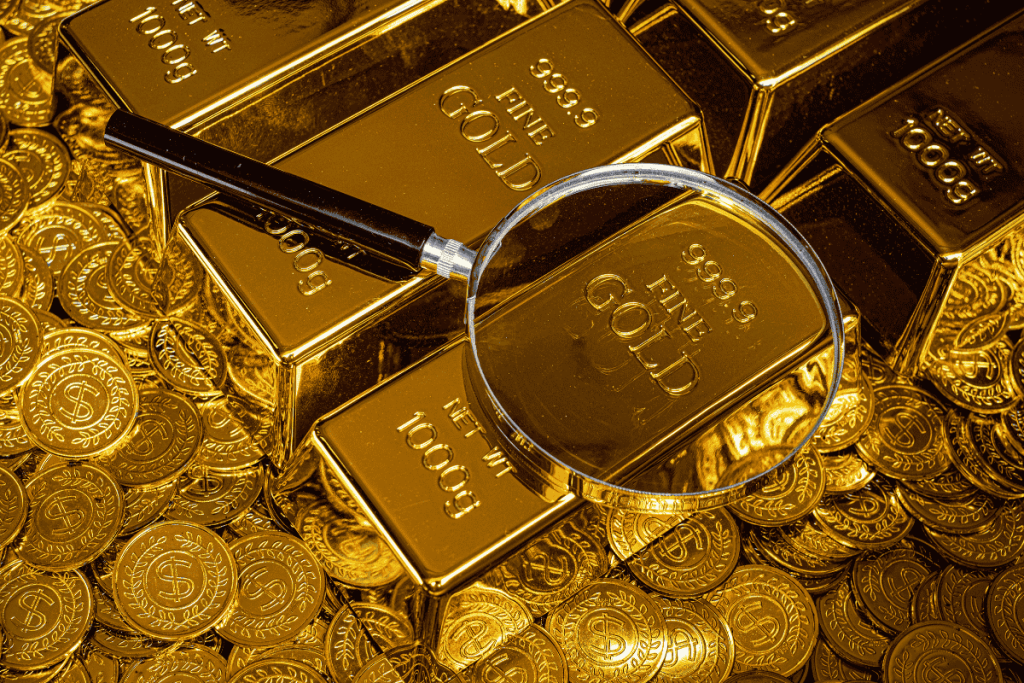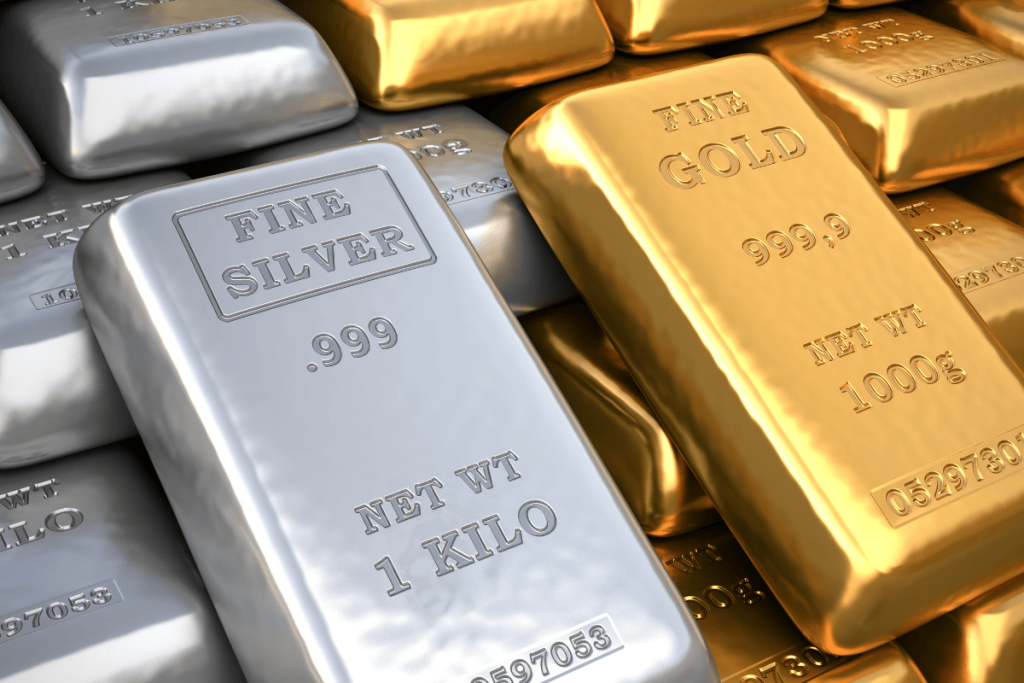- MetCon Silver Kilobar
Krugerrand History: A Journey Through Time and Gold

Table of contents
Thanks to their international appeal, Krugerrand coins have been popular for collecting, investing, and trading gold over the past five decades. The Krugerrand history is fascinating, reflecting a unique blend of economic strategy, cultural impact, and global interest in gold.
Each step has made the Krugerrand not just a coin but a symbol of wealth and investment, resonating with collectors and investors worldwide. Understanding the historical context of these silver and gold coins gives us deeper insight into their significance and the legacy they continue to build.
What is a Krugerrand?
The Krugerrand is a renowned South African gold coin known for its reliability and iconic design. Made from 22-karat gold, it is a popular choice among investors and collectors.
The coin features Paul Kruger on the obverse and a springbok on the reverse—South Africa’s national animal. Its durability and purity make it a trusted investment option, while its aesthetic appeal attracts collectors.
The Krugerrand is widely recognised and traded globally, offering a tangible asset for those seeking to diversify their portfolios with precious metals. Its value is closely tied to the current gold price.
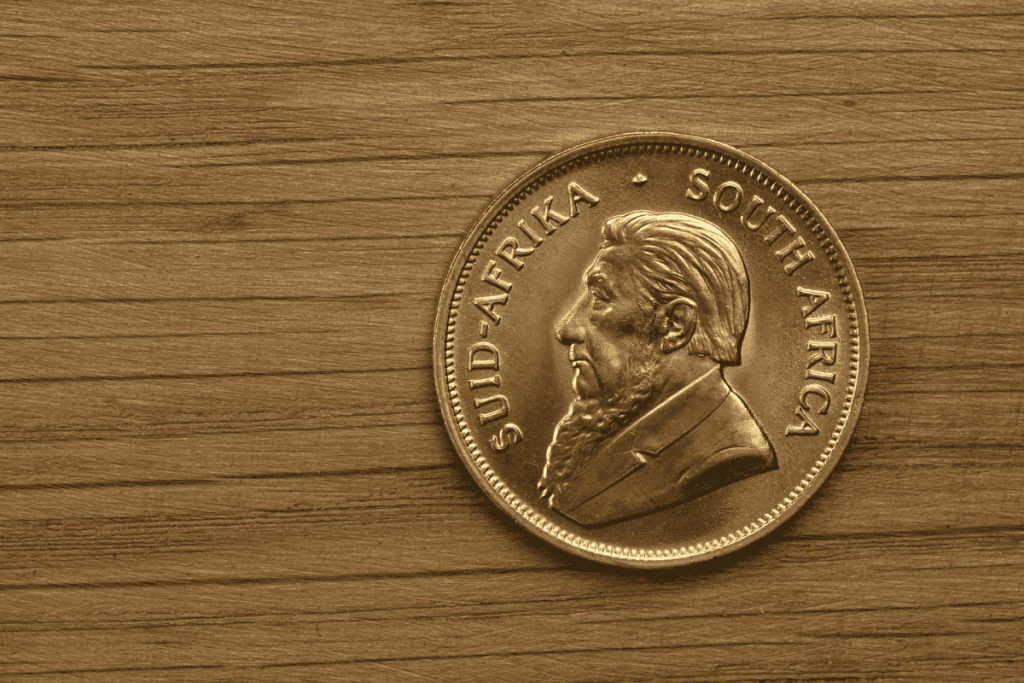
The History of the Krugerrand
The Krugerrand is of both historical and economic significance. It plays a vital role in the growth of the bullion markets and is an integral part of investors’ safeguarding their wealth. People widely hold Krugerrands as gold bullion coins, as international exchanges accept and trade them for conversion into any currency.
The South African Krugerrand coin has an intriguing and lengthy history, beginning with its minting in 1967 to stimulate the South African gold industry. Over time, it became widely owned and traded worldwide as a bullion coin.
The name combines “Rand,” South Africa’s currency, and Paul Kruger, the President of the old South African Republic. Each coin contains one troy ounce of pure gold and a small amount of copper, adding durability, and dealers worldwide widely recognise it.
Over the last 50+ years, producers have manufactured over 50 million Krugerrands, and even after all these years of service, they continue to stand out as one of the most sought-after coins due to their high quality and reliability.
It quickly became one of the world’s most traded gold coins and is also recognised as a legal tender in South Africa. This is a popular investment choice to diversify your portfolio with gold or hedge against inflation.
When Were Krugerrands First Minted?
| Year | History |
|---|---|
| 1967 | In the first year of production, 40,000 pieces of the Gold Krugerrand were made. The old Krugerrand coin was introduced to help market South African gold. |
| 1970 – 1980 | Production of the Krugerrand increased, dominating over 90% of the global gold coin market. |
| 1980s – 1990s | Popularity of the Krugerrand decreased due to the international sanctions against South Africa’s apartheid policy. |
| 1990s | The sanctions were lifted, and the Krugerrand regained its status as one of the world’s leading gold bullion coins. |
| 2017 | The Rand Refinery began minting silver versions of the Krugerrand. |
The Success of the Krugerrand
The global recognition of the South African Krugerrand led to the creation of gold bullion coins in various nations. Canada introduced the gold Maple Leaf in 1979, followed by China’s Panda one-ounce gold coin three years later.
Tracking Krugerrand demand reveals steady growth in the 1970s, followed by a decline in the late 1980s and 1990s. Production levels began to increase around 1999 and reached peaks of up to six million coins annually.
By 2018, more than 50 million ounces of gold Krugerrands had been produced. At one point, they were by far the most popular gold bullion coins in the world, with 90% of all bullion coins being Krugerrands.
The mining house added fractional Krugerrands (1/2, 1/4, and 1/10 ounces) alongside the original single-ounce editions, making Krugerrand’s global popularity insurmountable even today.
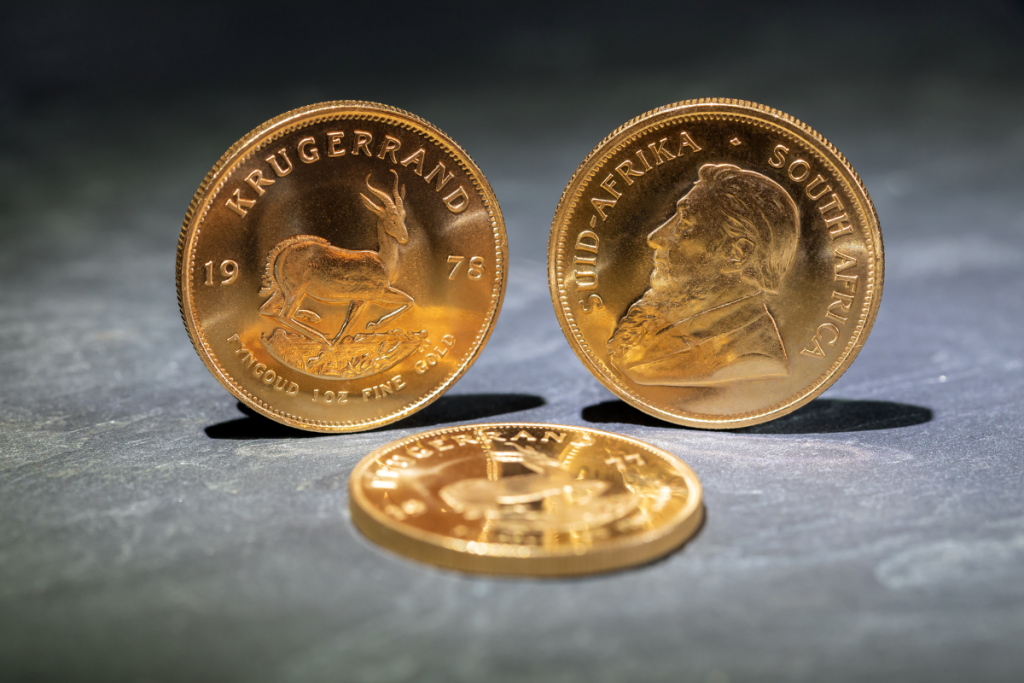
The Krugerrand’s Design
The Krugerrand is a unique international coin that combines South African symbolism with the nation’s currency. On the obverse, it features former president Paul Kruger, and on the reverse, it features a springbok antelope.
How Are They Made?
The South African Mint produces highly sought-after gold bullion coins known as Krugerrands, designed to withstand wear and tear. They are 91.67% gold, 8.33% copper alloy (22 karats), weigh 1 1/11 ounces, and contain a full troy ounce of gold per coin.
This combination renders Krugerrands more durable than pure gold bullion coins, helping them maintain their desirability among collectors. Krugerrands’ copper element imparts an orange hue, distinguishing them from regular gold bullion coins and other precious metals.
Gold Krugerrands
Gold Krugerrands, primarily minted from 22-karat gold, have a rich history dating back to 1967, significantly influencing economic growth and cultural history over the past five decades. In 1974, President Gerald Ford’s legalization of Krugerrand ownership for U.S. citizens greatly enhanced their global appeal.
The gold Krugerrand coins are available in various sizes, ranging from 1/10 oz to 1 oz, allowing investors to choose options that align with their budgets and investment objectives. The differing metal compositions between gold and silver Krugerrands also contribute to variations in their value, with gold Krugerrands generally commanding a higher price.
Silver Krugerrands
Silver Krugerrands, first released in 2017 by the South African Mint, is a special addition to gold bullion coins. Composed of one troy ounce of 99.9% fine silver and bearing the likeness of Paul Kruger, they make an ideal collector’s item due to their unique design and rarity.
Its matte, shiny finish distinguishes the silver Krugerrand, while the gold Krugerrand features a shiny finish. In addition to this visual difference, the silver Krugerrand has a serrated edge, unlike its gold counterpart. Furthermore, variations in the metals’ densities lead to differences in diameter and thickness between the two versions of the coin.
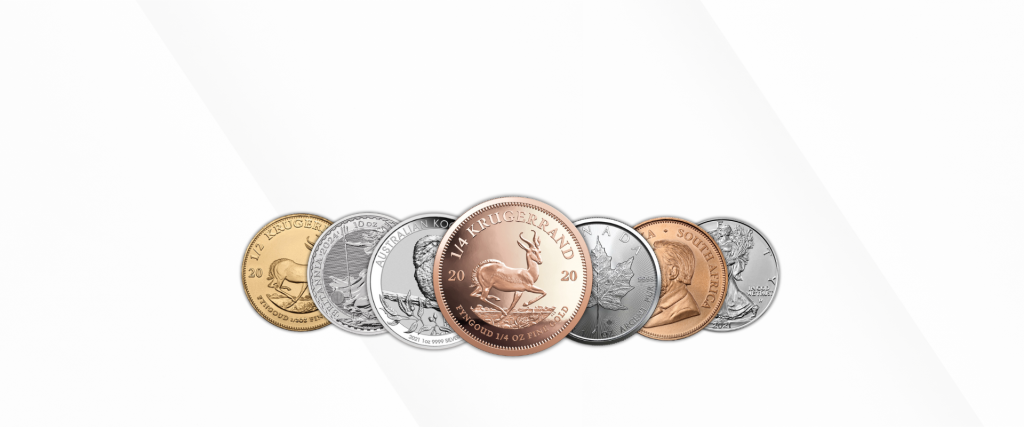
Investing in Krugerrands
Investing in Krugerrands is an excellent choice if you’re looking to preserve your wealth and increase its returns over the long term.
Diversification
Investing in Krugerrands offers numerous benefits, primarily through portfolio diversification. By spreading investments across various asset classes, investors can reduce risk while enhancing potential returns.
Their widely recognised value and high liquidity contribute to their popularity as their worth is closely tied to the intrinsic value of gold and silver. This stability makes them particularly appealing during times of economic uncertainty and inflation, as they often retain their value.
Buying Krugerrands
When buying Kruger coins, you must do enough research and buy your precious metals from a reputable dealer. This diligence not only ensures the authenticity of the coins but also guarantees a fair and just price, safeguarding your investment. They will be knowledgeable about the Krugerrands market and will be able to answer any questions you may have.
Storing Kruggerrands
How you clean and store your coins once you’ve got them should be considered carefully. They should be kept in a secure and dry location. Investors often prefer to store their Krugerrands in secure locations such as home safes, safe deposit boxes, or vaults. It’s important to regularly check the condition of these coins to ensure they remain in good shape, which helps maintain their value over time.

Shop Gold
The finest bullion. You deserve it.
The Krugerrand: A Trusted Investment and Cultural Icon
The Krugerrand history is rich and captivating. Its enduring popularity stems from its rich history, cultural significance, and economic value. As a symbol of South African heritage and a trusted investment option, the Krugerrand continues to captivate collectors and investors worldwide.
Whether you’re diversifying your portfolio or appreciating its numismatic appeal, the Krugerrand remains a timeless choice. For those interested in exploring this iconic coin further, partnering with a reputable dealer like Bullion Traders can provide a seamless and informed buying experience.
 1st Floor,
Willowbridge Centre,
Carl Cronje Drive,
Tyger Valley
1st Floor,
Willowbridge Centre,
Carl Cronje Drive,
Tyger Valley





